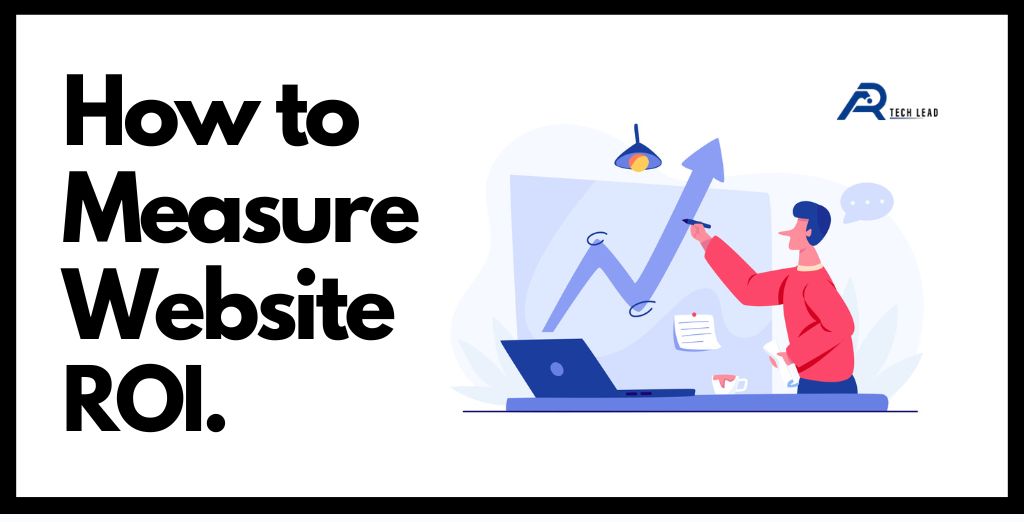Boost Your Profits: A Guide to Measuring Website ROI!
Your website isn’t just a digital storefront. It can serve as a dynamic asset that draws revenue, generates brand loyalty, and creates a marketplace for long-term business growth. And to truly understand its value, you must learn how to measure your return on investment. This article details the tools and steps needed to track, analyze, and optimize your site’s ROI.
Why ROI matters?
It allows you to analyze the value that your site is providing against the cost of running it. Measuring website ROI is flying blind without being able to tell if what you are doing online is profitable, where to allocate budget, or how to refine your marketing strategy. Be it a start-up or a legacy enterprise, understanding ROI is one of the ways to maximize business digital success.
How to Calculate ROI?
The basic formula for measuring website ROI is:


ROI = (Revenue from Website – Cost of Website) / Cost of Website x 100
This tells you how much profit (or loss) you’re making for every dollar spent. However, this equation is only the beginning. Real insights come from drilling down into the components—identifying where your revenue comes from and what your true costs are.
What is the Cost to Run a Website?
Website costs vary based on size, complexity, and purpose. Common expenses include:
- Domain registration and hosting – Basic, recurring fees.
- Design and development – One-time or ongoing costs for creating and maintaining the site.
- Content creation – Blog posts, product pages, media, and SEO optimization.
- Marketing and advertising – a, email campaigns, SEO tools.
- Maintenance and security – Regular updates, backups, and protection from cyber threats.
Understanding your total investment is critical for accurate ROI measurement.
How To Effectively Measure and Track Website ROI
1. Consider the sources of income.
Start by mapping out all the ways your website contributes to income. This might include:
- E-commerce sales
- Lead generation (e.g., lead forms filled out on the website or phone calls made to the business)
- Affiliate or ad revenues
- Subscription or membership fees
Then, by combining analytics tools that will measure user behavior with these sources of revenue, ensure that the complete customer journey is tracked from conversion entry onward.
2. Ensure Proper Attribution Models for Accurate Tracking
Traffic sources have different weights in terms of their contribution, while attribution models help give credit where credit is due. Models used can be discussed as follows:
- First touch attribution – Gives all credit to the source that initiated the first visit to the website.
- Last touch attribution – Deals with the final interaction that preceded the conversion.
- Multi-touch attribution – Takes into consideration all touchpoints of customer interaction in the journey.
Choosing a suitable model allows you to make informed decisions regarding marketing fund investments.
3. Essential KPIs for Measuring Website ROI
The key performance indicators (KPIs) are the actionable data used to evaluate ROI. Concentrate on:
- Conversion rate – The percentage of visitors who did what you wanted them to do.
- Cost per acquisition (CPA) – The cost to acquire one customer.
- Customer lifetime value (CLTV) – Total revenue expected from a customer.
- Bounce rate – Percentage of visitors who leave without doing anything.
- Traffic sources – Percentage breakdown of organic, paid, direct, and referral traffic.
These KPIs assist in making a diagnosis of what is working and what needs to be improved.
4. Best Tools for Measuring Website ROI
ROI need not be manually calculated- use tools that will ease your work.
- Google Analytics – Manages traffic, conversions, and even behavior, which is highly required to track.
- Google Tag Manager – Manages tracking codes, which are easier to customize.
- Hotjar or Crazy Egg – Makes visible by providing heatmaps and session recordings.
- Linked Lead and Revenue to specific campaigns with CRM platforms such as HubSpot and Salesforce.
- Sales data gains along with product performance through e-commerce platforms such as Shopify and WooCommerce.
Using these tools together will complete your vision of website performance.
When To Interpret Your Website ROI Results
Once you’ve gathered the data, put it into context:
- Positive ROI means your website is earning more than it costs. Invest further to scale results.
- Negative ROI indicates inefficiencies—evaluate user experience, traffic quality, and conversion funnel.
- Flat ROI suggests stagnation. Test new marketing strategies, content, or design tweaks.
Interpreting ROI isn’t just about the numbers; it’s about understanding the story behind them.
When To Invest in a Website Redesign
If your ROI continues to remain low or even decline, it is time to consider a redesign. The indicators include:
- An outdated design or technology
- A poor mobile experience
- High bounce rates
- Low engagement or conversions
- Slow loading
A modern website that is user-friendly and SEO-friendly will significantly improve performance and ROI.Text might have been such low-performance articles that they contributed little towards conversion for the owners. Maximum performance, maximum boosts in ROI.
Best Practices for Measuring Website ROI Accurately
To take an accurate view of the ever-so-popular discussion concerning the establishment of appropriate ROI:
- Set and establish goals. About results sought, know what success happens to be (sales, leads, signups).
- Traffick conversion from the get-go – Allow the first-day data collection to gather all the necessary info.
- Segment data: these could include device, traffic source, and campaign type.
- Review monthly or quarterly, don’t let it run yearly – until the end, look at them against industry standards-benchmark them.
Having precision in measurement provokes better decisions and better performances
Final Thoughts
It’s not just a matter of figuring out numbers; it is understanding what your online existence brings to your business in terms of revenue.
Creating revenue sources, using tracking means, and measuring key performance indicators are just the way some of the steps that will turn your site into a high-performance asset.
All through measurement, analysis, and amending, your best investment will not only be proved to have merit in value but will also be opened to its full potential in growth for the long term.
Author







